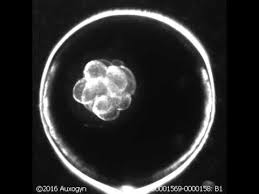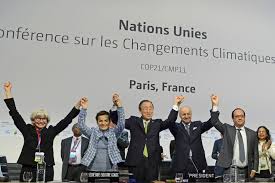I listened with some concern to the recent interview with Dr. Elizabeth Rex on LifeSite news, “The Moral Crisis of IVF: Can Catholics Adopt Frozen Embryos?”. During the discussion, Dr. Rex quoted selectively, incompletely and inaccurately from the two Magisterial document(s), Donum Vitae (1987) and Dignitatis Personae (2008).
Here is the full relevant section of Donum Vitae:
In consequence of the fact that they have been produced <in vitro,> those embryos which are not transferred into the body of the mother and are called “spare” are exposed to an absurd fate, with no possibility of their being offered safe means of survival which can be licitly pursued. (emphasis added)
This teaching is re-emphasized and expanded upon two decades later, in Dignitatis Personae:
With regard to the large number of frozen embryos already in existence the question becomes: what to do with them? Some of those who pose this question do not grasp its ethical nature, motivated as they are by laws in some countries that require cryopreservation centers to empty their storage tanks periodically. Others, however, are aware that a grave injustice has been perpetrated and wonder how best to respond to the duty of resolving it.
Proposals to use these embryos for research or for the treatment of disease are obviously unacceptable because they treat the embryos as mere “biological material” and result in their destruction. The proposal to thaw such embryos without reactivating them and use them for research, as if they were normal cadavers, is also unacceptable.
The proposal that these embryos could be put at the disposal of infertile couples as a treatment for infertility is not ethically acceptable for the same reasons which make artificial heterologous procreation illicit as well as any form of surrogate motherhood; this practice would also lead to other problems of a medical, psychological and legal nature.
It has also been proposed, solely in order to allow human beings to be born who are otherwise condemned to destruction, that there could be a form of “prenatal adoption”. This proposal, praiseworthy with regard to the intention of respecting and defending human life, presents however various problems not dissimilar to those mentioned above.
All things considered, it needs to be recognized that the thousands of abandoned embryos represent a situation of injustice which in fact cannot be resolved. Therefore John Paul II made an “appeal to the conscience of the world’s scientific authorities and in particular to doctors, that the production of human embryos be halted, taking into account that there seems to be no morally licit solution regarding the human destiny of the thousands and thousands of ‘frozen’ embryos which are and remain the subjects of essential rights and should therefore be protected by law as human persons”. (emphasis added)
To put it simply, embryo adoption is not permitted by the Church, nor it is the same as adopting born children, as Dr. Rex implies. The two cases are inherently different.
The ‘problems’ alluded to are explained in the previous sections of the documents. The two primary intrinsic evils involved in embryo adoption are:
- Embryo transfer – (which is always linked with IVF). The Church distinguishes reproductive technologies that ‘assist’ the natural God-given conjugal act, and those that ‘dominate’ and replace the act. Placing an embryo in a womb is dominative, and not assistive. The only morally permitted way for a baby to be in a womb is by the conjugal act, between a husband and wife.
- Surrogacy – Gestating a child who is not genetically related to the mother, placed there by artificial means (embryo transfer) is also explicitly condemned. Embryo adoption is surrogacy.
Besides this, there are two added a posteriori problems. One is that anything that could be done, in the end, and in some way, should be done. Would not legions of young women have an obligation to save these babies? And which ones do they choose? Like all intrinsic evils, embryo adoption raises more problems than it may purport to solve.
Also, if we harken back to 1968 and Humanae Vitae, Paul VI warns that if an intrinsic evil such as contraception were to be permitted, what’s to stop the state using such means, even coercively, for proportionate reasons? A Pandora’s box would be open to all sorts of evils, and a brave new world would dawn indeed.
Pope Saint John Paul II warns in Veritatis Splendor the prohibition of intrinsic evils is the safeguard against totalitarian moral anarchy. The Church is now practically alone in such prohibitions. Some things must never be done, regardless of how much good may be attained, or evil avoided.
I agree this is an emotional topic, and the intention to ‘save’ the babies an admirable one. But Pope John Paul II in Evangelium Vitae teaches that this earthly life is a penultimate good, not an ultimate one –we are made for heaven, including all those embryonic babies. Placing them in a womb, surrogate or otherwise, is an intrinsic evil, incommensurate with the spiritual harm this would entail.
If embryo adoption were an option, the Church would have said so. The technology was available when both documents were written. Rather, she says the opposite: The highest authority in the Church has explicitly declared that there is no licit way to bring these children to birth.
To echo John Paul II, the production of artificial embryos must stop, and the ongoing IVF horror show end.











